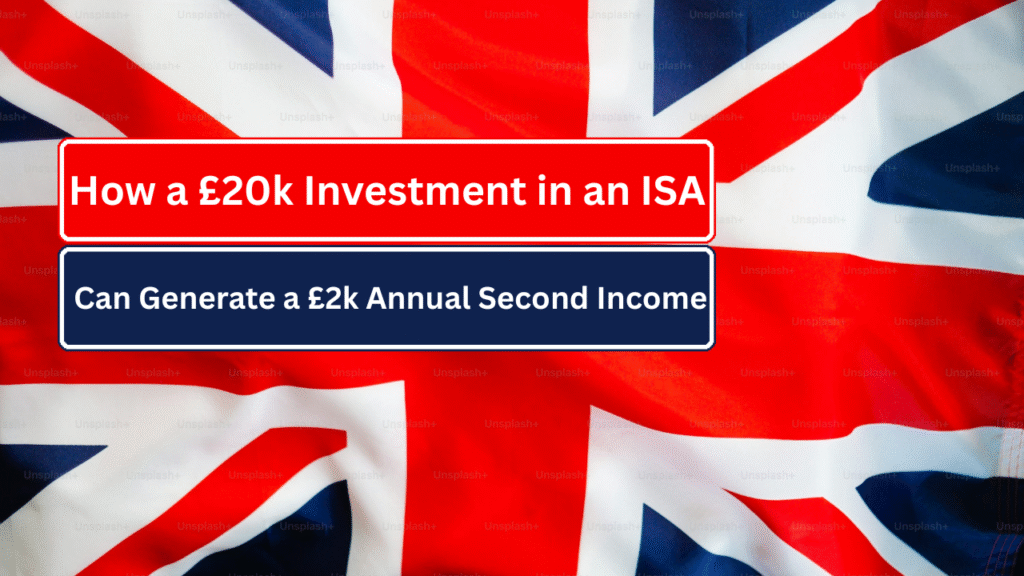In a world of rising living costs and fluctuating incomes, many individuals are seeking ways to supplement their earnings without additional work. One of the most effective and tax-efficient methods to generate a second income is by investing in an Individual Savings Account (ISA). By strategically placing £20,000 in an ISA, it is possible to generate an annual income of £2,000, depending on the investment options and market conditions. Here’s how it can be done.
Understanding ISAs and Their Benefits
An Individual Savings Account (ISA) is a popular tax-efficient savings tool in the UK. It allows individuals to save or invest money without paying tax on the interest, dividends, or capital gains they earn. Each tax year, UK residents can contribute up to a certain limit to their ISA accounts, with the current limit standing at £20,000 for the 2024/2025 tax year.
There are several types of ISAs available, including:
- Cash ISAs: Where your savings earn tax-free interest.
- Stocks and Shares ISAs: Where your investments can grow through the stock market, offering the potential for both capital growth and income.
- Lifetime ISAs (LISAs): Primarily for first-time homebuyers or retirement savings.
- Innovative Finance ISAs: For peer-to-peer lending, where you lend money to individuals or businesses.
In this case, we will focus on how £20,000 in a Stocks and Shares ISA could generate a second income worth £2,000 annually.
How £20,000 Can Generate £2,000 a Year
To achieve an annual income of £2,000 from a £20,000 ISA, the key is choosing investments that offer regular returns, such as dividends or interest. Let’s break down the numbers.
Target Return Rate
To generate £2,000 from a £20,000 ISA, you would need an annual return of 10%. This figure is important to aim for because most savings accounts or Cash ISAs offer very low interest rates, often below 1%. Therefore, investing in a Stocks and Shares ISA could be a more effective way to reach this target.
While achieving a 10% return may seem ambitious, it is important to note that many stocks and investment funds historically provide returns that can exceed this figure over the long term, particularly if you invest in dividend-paying stocks or funds.
Investment Options to Achieve the Target
There are various investment routes that could help you reach the 10% return target. Below are some options to consider:
- Dividend Stocks and Funds
Many companies, particularly in sectors like utilities, consumer goods, and financial services, pay regular dividends. A well-diversified portfolio of dividend-paying stocks could provide you with a reliable income stream. Some equity income funds yield around 4-5% annually in dividends, and these returns could be enhanced if you reinvest any dividends back into the fund. - Real Estate Investment Trusts (REITs)
REITs are another popular investment choice for income-seekers. These companies own, operate, or finance real estate that produces income. REITs can provide attractive yields, often ranging from 5% to 8% annually. By investing in REITs through a Stocks and Shares ISA, you can achieve a significant portion of the required £2,000 income. - Bonds or Bond Funds
While bonds tend to provide lower returns than stocks, they are generally considered safer. Corporate bonds or high-yield bond funds could offer returns of 4-6% annually, depending on the risk involved. These investments could serve as a stable base in a balanced portfolio. - Peer-to-Peer Lending (P2P)
Peer-to-peer lending, which can be accessed via an Innovative Finance ISA, allows individuals to lend money to businesses or borrowers for a return. Returns on P2P lending platforms can range from 5% to 10%, depending on the risk level. While there’s more risk associated with P2P lending, it could be an effective way to generate passive income.
Managing the Risks
While the potential to earn £2,000 annually from £20,000 in an ISA is appealing, it’s important to consider the risks involved. Stocks, bonds, and other investments fluctuate in value and can be affected by market conditions. Here are some risk management strategies:
- Diversification: Spread your £20,000 across different asset types, such as stocks, bonds, and REITs, to reduce the impact of a downturn in any one sector.
- Regular Monitoring: Keep track of your investments and make adjustments if necessary to ensure you are still on track to meet your income goals.
- Long-term Perspective: Remember that market fluctuations are normal, and a long-term view may help you ride out periods of volatility.
Tax Considerations
One of the major advantages of an ISA is the tax efficiency. The income generated from your ISA—whether from dividends, interest, or capital gains—is not subject to tax. This allows your £20,000 to work harder for you without the need to worry about paying tax on any of the returns you receive.
Additional Contributions and Reinvestment
If you want to increase the chances of achieving your £2,000 income target, consider making regular contributions to your ISA. The £20,000 limit is the annual allowance, so you can top up your ISA each year to increase the overall value. Additionally, reinvesting any dividends or interest back into the ISA will compound your returns, further helping to generate a higher income over time.
Conclusion
Using a £20,000 ISA to generate an additional £2,000 a year is a realistic goal for many individuals, especially if the money is invested in high-quality dividend stocks, REITs, or peer-to-peer lending platforms. While the return rate may vary, with careful planning, diversification, and monitoring, your ISA can become an effective tool for achieving a secondary income.
For more information about ISA options, tax-free allowances, and regulations, visit official government websites such as HM Revenue & Customs (HMRC) or MoneyHelper.

